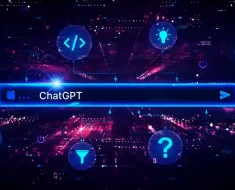Introduction
Artificial Intelligence has seen remarkable advancements in recent years, particularly in natural language processing. Among the numerous AI language models, two have garnered significant attention: GPT-4 and Llama 3.1. Both are designed to understand and generate human-like text, making them valuable tools for various applications, from customer support to content creation.
In this blog, we will explore the differences and similarities between GPT-4 vs. Llama 3.1, delving into their technological foundations, performance, strengths, and weaknesses. By the end, you’ll have a comprehensive understanding of these two AI giants and insights into their prospects.
Learning Outcomes
- Gain insight about GPT-4 vs Llama 3.1 and their prospect.
- Understand the background behind GPT-4 vs Llama 3.1.
- Learn the key differences between GPT-4 vs Llama 3.1.
- Comparing the performance and capabilities of GPT-4 and Llama 3.1.
- Understanding in detail the strengths and weaknesses of GPT-4 vs Llama 3.1.
This article was published as a part of the Data Science Blogathon.
Background of GPT-4 vs. Llama 3.1
Let us start first by diving deep into the background of both AI giants.
Development History of GPT-4
ChatGPT, developed by OpenAI, represents one of the most advanced iterations in the series of Generative Pre-trained Transformers (GPT) models. The journey began with GPT-1, released in 2018, marking a significant milestone in the field of natural language processing (NLP). GPT-1 was built with 117 million parameters, setting the stage for more sophisticated models by showcasing the potential of transformer-based architectures in generating human-like text.
In 2019, GPT-2 followed, boasting 1.5 billion parameters—a significant leap from its predecessor. GPT-2 demonstrated much more coherent and contextually relevant text generation, which caught widespread attention for both its capabilities and the potential risks of misuse, leading OpenAI to initially limit its release.
The most transformative leap came with GPT-3 in June 2020. With 175 billion parameters, GPT-3 exhibited an unprecedented level of language understanding and generation. Its ability to perform a variety of tasks—from writing essays and poems to answering complex questions—without needing task-specific fine-tuning, positioned GPT-3 as a versatile and powerful tool across numerous applications.
Building on the success of GPT-3, GPT-4 was released in 2023, marking a new era of advancements in AI language models. GPT-4 introduced several distinct versions, each tailored to different use cases and performance requirements.
Different versions of GPT-4
- GPT-4: The standard version of GPT-4 continued to push the boundaries of language understanding and generation, offering improvements in coherence, context awareness, and the ability to perform complex reasoning tasks.
- GPT-4 Turbo: This variant was designed for applications requiring faster response times and more efficient computation. While slightly smaller in scale compared to the standard GPT-4, GPT-4 Turbo maintained a high level of performance, making it ideal for real-time applications where speed is critical.
- GPT-4o: The “optimized” version, GPT-4o, focused on delivering a balance between performance and resource efficiency. GPT-4o was particularly suited for deployment in environments where computational resources were limited but where high-quality language generation was still essential.
Each version of GPT-4 was developed with specific advancements in training methodologies and fine-tuning processes. These advancements allowed GPT-4 models to exhibit superior language understanding, coherence, and contextual relevance compared to their predecessors. OpenAI also placed a strong emphasis on refining the models abilities to engage in more natural and meaningful dialogues, incorporating user feedback through iterative updates.
The release of GPT-4 and its variants further solidified OpenAI’s position at the forefront of AI research and development, demonstrating the versatility and scalability of the GPT architecture in meeting diverse application needs.
Development History of Llama 3.1
Llama 3.1 is another prominent language model developed to push the boundaries of AI language capabilities. Created by Meta, Llama aims to provide a robust alternative to models like ChatGPT. Its development history is marked by a collaborative approach, drawing on the expertise of multiple institutions to create a model that excels in various language tasks.
Llama 3.1 represents the latest iteration, incorporating advancements in training techniques and leveraging a diverse dataset to enhance performance. Meta’s focus on creating an efficient and scalable model has resulted in Llama 3.1 being a strong contender in the AI language model arena.
Key Milestones and Versions
GPT-4 and Llama 3.1 have undergone significant updates and iterations to enhance their capabilities. For ChatGPT, the major milestones include the releases of GPT-1, GPT-2, GPT-3, and now GPT-4, each bringing substantial improvements in performance and usability. ChatGPT itself has seen several updates, focusing on refining its conversational abilities and reducing biases.
Llama, while newer, has quickly made strides in its development. Key milestones include the initial release of Llama, followed by updates that improved its performance in language understanding and generation tasks. Llama 3.1, the latest version, incorporates user feedback and advances in AI research, ensuring that it remains at the cutting edge of technology.
Capabilities of GPT-4 and Llama-3.1
Both models boast impressive capabilities, from understanding and generating human-like text to translating languages and more, but each has its own strengths.
Llama 3.1
Llama 3.1, a more advanced model than its predecessor, has 3 sizes of models – 8B, 70B, and 405B parameters. It’s a highly advanced model, capable of:
- Understanding and generating human-like language.
- Answering questions and providing information.
- Summarizing long texts into shorter, more digestible versions.
- Translating between languages.
- Generating creative writing, such as poetry or stories.
- Conversing and responding to user input in a helpful and engaging way.
Keep in mind that Llama 3.1 is a more advanced model than its predecessor, and its capabilities may be more refined and accurate.
GPT-4
GPT-4, developed by OpenAI, has a wide range of capabilities, including:
- Understanding and generating human-like language.
- Answering questions and providing information.
- Summarizing long texts into shorter, more digestible versions.
- Translating between languages.
- Generating creative writing, such as poetry or stories.
- Conversing and responding to user input in a helpful and engaging way.
- Ability to process and analyze large amounts of data.
- Ability to learn and improve over time.
- Ability to understand and respond to nuanced and context-specific queries.
GPT-4 is a highly advanced model, and its capabilities may be more refined and accurate than its predecessors.
Differences in Architecture and Design
While both GPT-4 and Llama 3.1 utilize transformer models, there are notable differences in their architecture and design philosophies. GPT-4’s emphasis on scale with massive parameters contrasts with Llama 3.1’s focus on efficiency and performance optimization. This difference in approach impacts their respective strengths and weaknesses, which we will explore in more detail later in this blog.
Performances of GPT-4 and Llama-3.1
We will now look into the performances of GPT-4 and Llama 3.1 in detail below:
Language Understanding and Generation
One of the primary metrics for evaluating AI language models is their ability to understand and generate text. GPT-4 excels in generating coherent and contextually relevant responses, thanks to its extensive training data and large parameter count. It can handle a wide range of topics and provide detailed answers, making it a versatile tool for various applications.
Llama 3.1, while not as large as GPT-4, compensates with its efficiency and optimized performance. It has demonstrated strong capabilities in understanding and generating text, particularly in specific domains where it has been fine-tuned. Llama 3.1’s ability to provide accurate and context-aware responses makes it a valuable asset for targeted applications.
Context Handling and Coherence
Both GPT-4 and Llama 3.1 have been designed to handle complex conversational contexts and maintain coherence over extended dialogues. GPT-4’s large parameter count allows it to maintain context and generate responses that are relevant to the ongoing conversation. This makes it particularly useful for applications that require sustained interactions, such as customer support and virtual assistants.
Llama 3.1, with its focus on efficiency, also excels in context handling and coherence. Its training process, which incorporates both supervised and unsupervised learning, enables it to maintain context and generate coherent responses across various domains. This makes Llama 3.1 suitable for applications that require precise and contextually aware responses, such as legal document analysis and medical consultations.
Strengths of Llama 3.1
Llama 3.1 excels in contextual understanding and knowledge retrieval, making it a powerful tool for specialized applications.
Contextual understanding
Llama 3.1 excels at understanding context and nuances in language.
Example: Given a paragraph about a person’s favorite food, Llama 3.1 can accurately identify the person’s preferences and reasons.
print(llama3_1("Given a paragraph about a my favorite food "))#Output: Correct Output of Person's Preference
Knowledge retrieval
Llama 3.1 has a vast knowledge base and can retrieve information efficiently.
print(llama3_1("What is the capital of France?"))
# Output: ParisStrengths of GPT-4
GPT-4 shines in conversational flow and creative writing, offering natural and engaging responses across a wide range of tasks.
Conversational flow
GPT-4 maintains a natural conversational flow.
print(GPT-4("Tell me a story about a character who has hidden talent")) # Output: an engaging story
Creative writing
GPT-4 is skilled at generating creative writing, such as poetry or dialogue.
print(GPT-4("Write a short poem about the ocean")) # Output: beautiful poem
Weaknesses of Llama 3.1
Despite its strengths, Llama 3.1 has limitations, particularly in areas requiring common sense or understanding idiomatic expressions.
Common Sense
Llama 3.1 sometimes struggles with common sense or real-world experience.
Example:
print(llama3_1("What happens when you drop a glass?")) # Output: incorrect or unclear answer
Idioms and Colloquialisms
Llama 3.1 may struggle to understand idioms or expressions.
print(llama3_1("What does 'break a leg' mean?")) # Output: literal interpretation
Weaknesses of GPT-4
GPT-4’s overconfidence and occasional lack of domain-specific knowledge can lead to challenges in certain applications.
Overconfidence
GPT-4 may provide incorrect answers with high confidence.
print(GPT-4("What is the meaning of life?")) # Output: overly confident but incorrect answer
Lack of domain-specific knowledge
GPT-4 may struggle with specialized or domain-specific knowledge.
print(GPT-4("What is the latest research on quantum computing?")) # Output: outdated or unclear answer
Comparison on Various Tasks
Comparing GPT-4 and Llama 3.1 across different tasks highlights their respective strengths and weaknesses, offering a deeper understanding of their capabilities.
Coding Task: Generating a Python Function
Task: Write a Python function that takes a list of numbers and returns a list with the squares of those numbers.
GPT-4
def square_numbers(numbers):
squared = []
for number in numbers:
squared.append(number ** 2)
return squared
# Example usage
numbers = [1, 2, 3, 4, 5]
print(square_numbers(numbers))
# Output: [1, 4, 9, 16, 25]Output:
Llama 3.1
Code:
def square_numbers(numbers):
return [n ** 2 for n in numbers]
numbers = [1, 2, 3, 4, 5]
squared_numbers = square_numbers(numbers)
print(squared_numbers)
# Output: [1, 4, 9, 16, 25]Output:
General Task: Summarizing a Text
Task: Summarize the following text: “Artificial intelligence is a rapidly advancing field of technology with numerous applications in various industries, including healthcare, finance, and transportation. It has the potential to revolutionize the way we live and work.”
Llama 3.1
“Artificial intelligence (AI) is a fast-evolving technology with vast applications across industries like healthcare, finance, and transportation, poised to transform our lives and work significantly.”
GPT-4
“Artificial intelligence is quickly progressing and has many applications in healthcare, finance, and transportation, with the potential to transform our lives and work.”
Creative Task: Writing a Short Story Opening
Task: Write the opening paragraph of a short story about a mysterious forest.
Llama 3.1
“The trees loomed before me, their twisted branches like skeletal fingers reaching out to snare the last wisps of sunlight. The forest had always been a place of whispered warnings and cautionary tales, a realm of ancient secrets and unspoken terrors that seemed to writhe and twist in the shadows. And yet, I felt an inexorable pull to enter this mystical world, to surrender to the eerie silence and uncover the mysteries that lay hidden beneath the canopy of leaves, where the very air seemed to vibrate with an otherworldly energy.”
GPT-4
“In the heart of an ancient, forgotten land, there lay a forest shrouded in perpetual twilight. Its towering trees whispered secrets to the wind, their gnarled branches intertwining to form an impenetrable canopy. Those who dared to venture within spoke of strange lights flickering through the underbrush and shadows that moved with a life of their own. Legends told of an old magic that thrived in the depths of this forest, a magic that beckoned the brave and the foolhardy alike, promising wonders and terrors beyond imagination.”
Overall Analysis
An overall analysis of GPT-4 and Llama 3.1 shows their unique strengths, from coding and summarization to creative writing.
Coding Task
- Llama 3.1 uses a list comprehension for a more concise and Pythonic solution.
- GPT-4 uses a more verbose approach with a loop, which might be easier for beginners to understand.
Summarizing a Text
Llama 3.1:
- Clarity: Provides a clear and concise summary with a slightly more formal tone.
- Detail: Uses “fast-evolving” and “vast applications” which add a bit of nuance and depth.
- Effectiveness: The term “poised to transform” suggests a strong potential for change, adding emphasis to the transformative impact.
GPT-4:
- Clarity: Delivers a straightforward and easily digestible summary.
- Detail: Uses “quickly progressing” and “many applications,” which are straightforward but slightly less descriptive.
- Effectiveness: The summary is clear and direct, making it very accessible, but slightly less emphatic about the potential impact compared to Llama 3.1.
Creative Task
Llama 3.1:
- Imagery: Uses vivid and evocative imagery with phrases like “skeletal fingers” and “vibrate with an otherworldly energy.”
- Tone: The tone is mysterious and immersive, emphasizing the forest’s eerie and ominous qualities.
- Effectiveness: Creates a strong sense of foreboding and intrigue, pulling the reader into the atmosphere of the forest.
GPT-4:
- Imagery: Also rich in imagery, with “shrouded in perpetual twilight” and “gnarled branches.”
- Tone: The tone combines mystery with a hint of wonder, balancing both fear and fascination.
- Effectiveness: Engages the reader with its portrayal of ancient magic and the dual nature of the forest, blending excitement and danger.
Comparing with other AI Giants
| Feature | Llama 3.1 | GPT-4 | Claude | Gemini |
|---|---|---|---|---|
| Architecture | Transformer-based LLM | Transformer-based LLM | Likely Transformer-based | Transformer-based LLM |
| Capabilities | Conversational abilities, text generation | Advanced conversation, text generation | Specialized tasks, improved efficiency | Safety, alignment, complex text comprehension |
| Strengths | High accuracy, versatile | Versatile, strong performance | Potentially efficient, specialized | Cutting-edge performance, versatile |
| Limitations | High computational requirements, biases | High computational requirements, biases | Limited info on performance, use cases | May prioritize safety over performance |
| Specialization | General NLP tasks | General NLP tasks | Potentially specialized domains | Safety and ethical applications |
Which AI Giant is better?
The choice between these models depends on the specific use case:
- GPT-4: Best for a wide range of applications requiring high versatility and strong performance.
- Gemini: Another top performer, backed by Google’s resources, suitable for advanced NLP tasks.
- Claude: Ideal for applications where safety and ethical considerations are paramount.
- Mistral: Potentially more efficient and specialized, though less information is available on its overall capabilities.
- Llama 3.1: Highly versatile and strong performer, suitable for general NLP tasks, content creation, and research, backed by Meta’s extensive resources also provides answer as per personal interest.
Conclusion
In this comparison of GPT-4 and Llama 3.1, we have explored their technological foundations, performance, strengths, and weaknesses. GPT-4, with its massive scale and versatility, excels in generating detailed and contextually rich responses across a wide range of applications. Llama 3.1, on the other hand, offers efficiency and targeted performance, making it a valuable tool for specific domains. We also compared GPT-4 and Llama 3.1 with other tools like Mistral , Claude and Gemini.
All models have their unique strengths and are continuously evolving to meet user needs. As AI language models continue to advance, the competition between GPT-4 and Llama 3.1 will drive further innovation, benefiting users and industries alike.
Key Takeaways
- Learned GPT-4, developed by OpenAI, utilizes massive parameters, making it one of the largest and most versatile language models available.
- Understood Llama 3.1, developed by Meta, focuses on efficiency and performance optimization, delivering high performance with fewer parameters compared to GPT-4.
- Noted GPT-4 is particularly effective at maintaining context over extended interactions, making it ideal for applications requiring sustained dialogue.
- Compared Llama 3.1 , GPT-4 with other AI giants like Mistral , Claude and Gemini
- Acknowledged Llama 3.1 performs exceptionally well in specific domains where it has been fine-tuned, offering highly accurate and context-aware responses.
- Learned how Llama 3.1 users have noted its accuracy and efficiency in specialized fields, though it may not be as versatile as GPT-4 in more general topics.
- The competition between GPT-4 and Llama 3.1 will continue to drive advancements in AI language models, benefiting users and industries alike.
Frequently Asked Questions
A. GPT-4: Developed by OpenAI, it focuses on large-scale, versatile language processing with advanced capabilities in understanding, generating text, and maintaining context in conversations. It is particularly effective in generating detailed, contextually rich responses across a wide range of applications.
Llama 3.1: Developed by Meta, it emphasizes efficiency and performance optimization with a focus on delivering high performance with fewer parameters compared to GPT-4. Llama 3.1 is especially strong in specific domains where it has been fine-tuned, offering highly accurate and context-aware responses.
A. Both models excel in general NLP tasks, but GPT-4, with its massive scale and versatility, might have a slight edge due to its ability to handle a broader range of topics with more detail. Llama 3.1, while also highly capable, is particularly strong in specific domains where it has been fine-tuned.
The media shown in this article is not owned by Analytics Vidhya and is used at the Author’s discretion.





